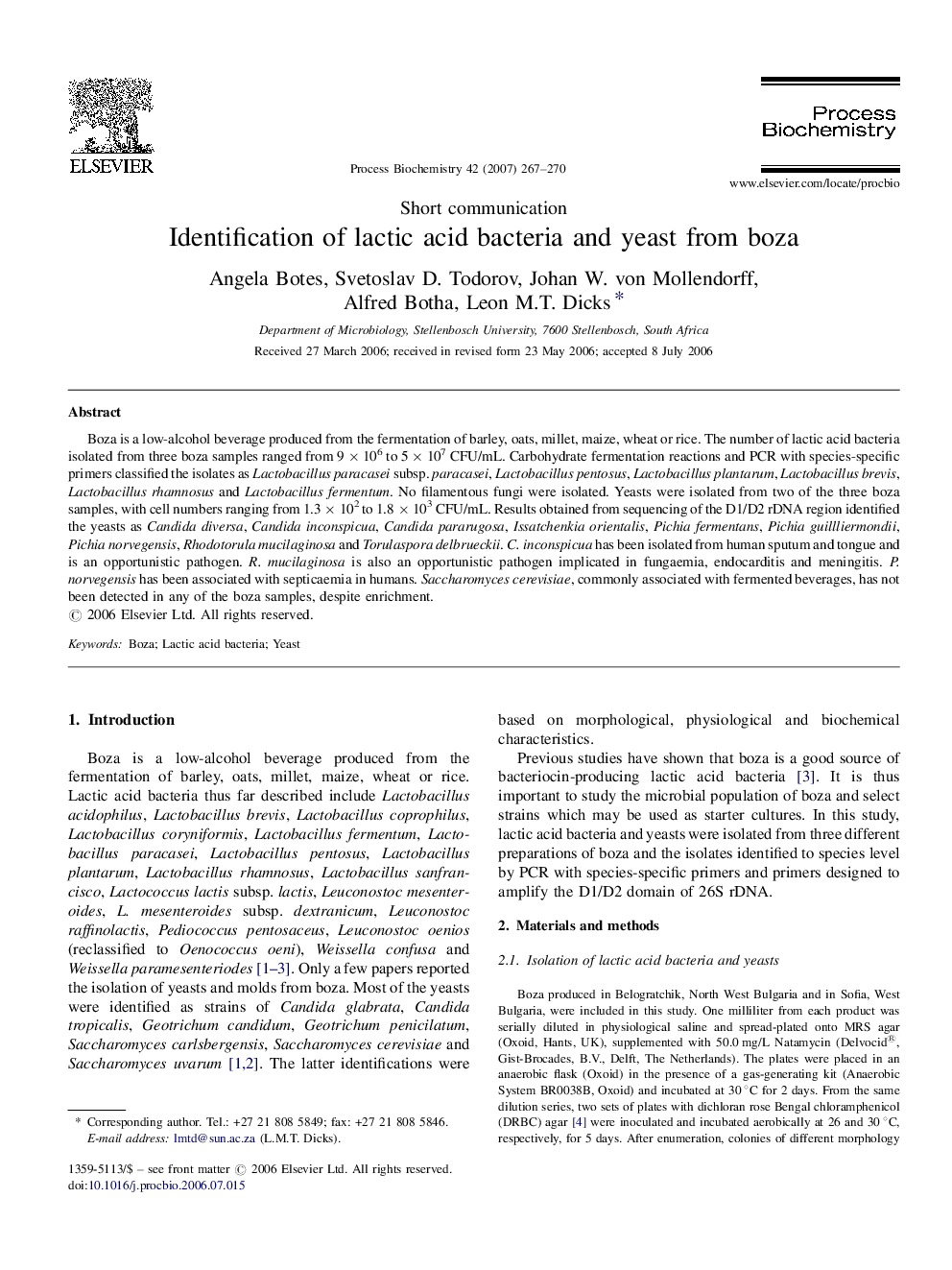| Article ID | Journal | Published Year | Pages | File Type |
|---|---|---|---|---|
| 35967 | Process Biochemistry | 2007 | 4 Pages |
Boza is a low-alcohol beverage produced from the fermentation of barley, oats, millet, maize, wheat or rice. The number of lactic acid bacteria isolated from three boza samples ranged from 9 × 106 to 5 × 107 CFU/mL. Carbohydrate fermentation reactions and PCR with species-specific primers classified the isolates as Lactobacillus paracasei subsp. paracasei, Lactobacillus pentosus, Lactobacillus plantarum, Lactobacillus brevis, Lactobacillus rhamnosus and Lactobacillus fermentum. No filamentous fungi were isolated. Yeasts were isolated from two of the three boza samples, with cell numbers ranging from 1.3 × 102 to 1.8 × 103 CFU/mL. Results obtained from sequencing of the D1/D2 rDNA region identified the yeasts as Candida diversa, Candida inconspicua, Candida pararugosa, Issatchenkia orientalis, Pichia fermentans, Pichia guillliermondii, Pichia norvegensis, Rhodotorula mucilaginosa and Torulaspora delbrueckii. C. inconspicua has been isolated from human sputum and tongue and is an opportunistic pathogen. R. mucilaginosa is also an opportunistic pathogen implicated in fungaemia, endocarditis and meningitis. P. norvegensis has been associated with septicaemia in humans. Saccharomyces cerevisiae, commonly associated with fermented beverages, has not been detected in any of the boza samples, despite enrichment.
